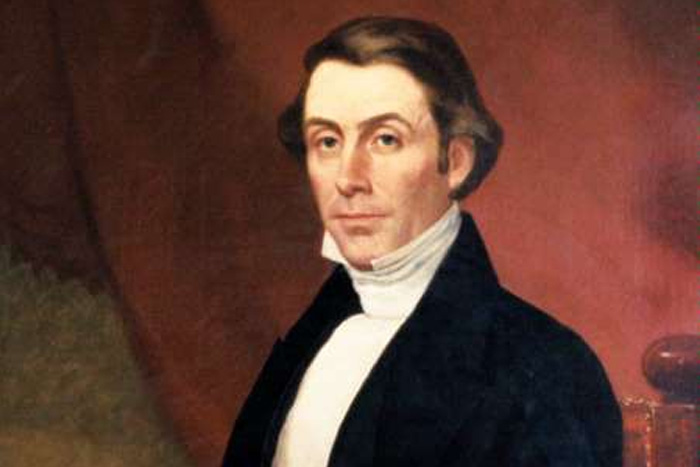Methodist Origins

John Price Durbin, president of the college and Board of Trustees chair, 1833.
Dickinson's connections with the Methodist Church are long and deep
by Michelle Simmons
During a recent anniversary celebration, Pastor Tom Maurer of the Allison United Methodist Church (UMC) preached on the history of the long relationship between the church and Dickinson College, from sharing worship space in Carlisle to the congregation’s temporary use of Bosler Hall, twice—once after a devastating 1954 fire and, a few years later, during construction of the current church.
But little known are the connections between Dickinsonians and Methodists that go deeper than worshipping together.
In March 1832, the trustees of Dickinson voted to close the college due to lack of operating funds. Dickinson had been struggling financially for years and although the college was nominally Presbyterian at the time, it had changed its charter in 1821 to limit clergy presence on the Board of Trustees to qualify for a state grant. Even with state support, though, the college was unable to keep its doors open.
Meanwhile, the Methodists, a fast-growing denomination during the Second Great Awakening (a period of intense religious revivalism between 1790 and 1840) were seeking educational legitimacy in an increasingly pluralistic society. “They were growing in numbers and social status, and the desirability of educational institutions of their own could not be denied,” wrote Charles Coleman Sellers in Dickinson College: A History.
Shortly after doors closed at Dickinson, the Baltimore Conference of the Methodist Episcopal (now United Methodist) Church approached Dickinson’s trustees about reopening as a Methodist-affiliated college. Seeing the opportunity to continue operations, the existing Board of Trustees agreed to dissolve during its June 1833 meeting and handed over the keys to a newly constituted board. On June 7, 1833, the new board elected John Price Durbin as president of the college and chairman of the Board of Trustees.
Durbin, a Methodist minister who had served as chaplain to the U.S. Senate, quickly set out to revitalize the college. According to Sellers, within three years, enrollment had tripled to more than 100 students, and the college was back on firm financial ground.
In 1835, the Baltimore Conference began making an annual contribution to the college, which continues today and helps support the Office of Religious Life. Though students no longer are required to attend chapel services at the Allison UMC—a practice that ended in 1964—the church’s presence on campus maintains the legacy of a time when the college experienced its own Great Awakening.
Published December 30, 2008